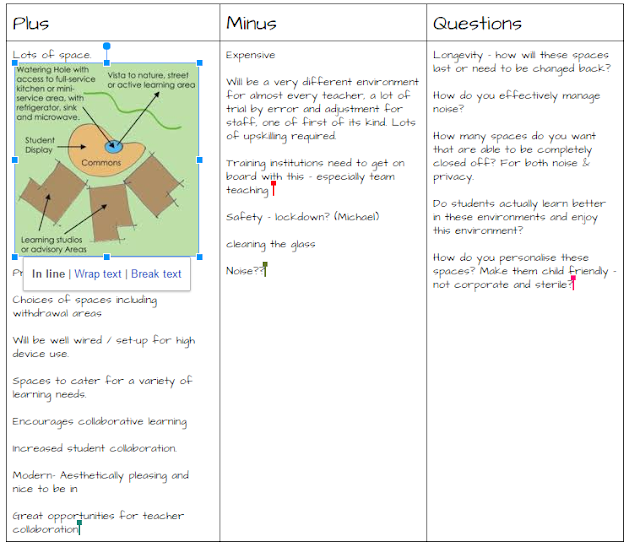So, this week is the end of Semester 1 of the course - hard to believe that 16 weeks have gone and that I have squeezed out SIX reasonably demanding assessments in that time ......to be honest not exactly sure how I managed to get this done.
Today's session introduced us to 'WYOD' - wear your own device:
Tan Le developed a computer interface to read user brainwaves to make it possible to control virtual objects.
NZ company - Thought Wired - is the front runner in NZ in this.
From this - to this
What applications are there of these tools for us?
- gaming and entertainment
- the way in which we can train ourselves in terms of mindfulness
- improve focus for education
- enhance education
How can you transfer thoughts and ideas if you have trouble communicating? Can technology assist?
A key example is Stephen Hawking and how he manages to communicate with Motor Neurone Disease - as an assistive technology.
If we have the ability to take brain waves and transfer them into digital signals / impulses you can just about do anything.
So can you do the reverse - transfer digital impulses images and language???
The research into brain to brain transfer using this technology - check out this freaky little clip
The technology was available for us to have a go with -
| Schira's brain being invaded!! Session 16 - Part 2 - looking ahead to the next 16 weeks of learning and assessing - eeeeeeekkkk
What is research?
What makes a good research question?
- is it researchable? - biggest make is the question is too broad.
Focus clearly on our own context - the narrower the better.
The research question should involve -
- general topic area
- specific area of practice
- context - where and when
Check the Unitec tutorials for conducting research.
Check Week 17 and 21 for examples.
Advice is:
- not to quote secondary sources - lose the fidelity of the source - for the formal literature review.
- not to use footnotes but in text citations
- use APA
- cite for paraphrasing
- indirect quotes and paraphrasing is what is needed for lit review
|




















